|
|
| Chinese
Myths and Legends |
Chang-eur,
Seurng m'Ngor, or The Goddess on the Moon |
|
Chang-e or The Goddess on/of/in
the Moon is a central character of Chinese myths and
legends.
She is remembered during Mid-Autumn Festival or Moon
Festival, where she is the central character - even
to this day. People give 'mooncakes'
in her honour, stare at the Moon in hopes of seeing
her, and retell her sad tale of unrequited love. All
Chinese peoples know her story...
Mid-autumn Day occurs on the 15th day of the eighth
lunar month of the Chinese calendar, which is in September
or early October in the Gregorian calendar. It is a
date that parallels the autumnal equinox of the solar
calendar, when the moon is at its fullest and roundest.
The Festival can be traced back through literature to
the Shang dynasty some 3, 500 years ago. Presumably
it predates this by millennia, as certain references
in text allude to ancient myths - that are now being
proved to be fact!
Mid-Autumn Festival is one of the few most important
holidays in the Chinese calendar, the others being Chinese
New Year and Winter Solstice. |
|
Chang'e, Chang-e, Ch'ang-O or Chang-Ngo (Chinese:
嫦娥; pinyin: Cháng'é), originally known as Heng'e
or Heng-O (姮娥; Héng'é, changed according to naming
taboo), is the Chinese goddess of the moon.
In Mandarin her name sound like 'Chang-eur'; whilst
Cantonese speakers know her as 'Seurng m'Ngor'
Unlike many lunar deities in other cultures who
personify the moon, Chang'e only lives on the
moon. As the "woman on the Moon", Chang'e
could be considered the Chinese complement to
the Western notion of a man in the moon.
Chang'e is the subject of several legends in Chinese
mythology, most of which incorporate several of
the following elements: Houyi the Archer, a benevolent
or malevolent emperor, an elixir of life, and
of course, the moon. The origin might have been
borrowed from Hindu legend Chandra.
The mention of Houyi the Archer is significant
for students of cross-cultural studies, as he
could be synonymous with 'Cupid' of Western orthodoxy.
|

|
|
|
The Myths:
Chang'e and Houyi the Archer (Version 1)
According to legend, Chang'e and her husband Houyi
were immortals living in heaven. One day, the ten
sons of the Jade Emperor transformed into ten suns,
causing the earth to scorch. Having failed to order
his sons to stop ruining the earth, the Jade Emperor
summoned Houyi for help. Houyi, using his legendary
archery skills, shot down nine of the sons, but spared
one son to be the sun. The Jade Emperor was obviously
not pleased with Houyi's solution to save the earth:
nine of his sons were dead. As punishment, the Jade
Emperor banished Houyi and Chang'e to live as mere
mortals on earth.
In Chinese mythology, Jade Rabbit lives on the moon
where it makes herbal medicine. The rabbit is also
mentioned in the novel Journey to the West. According
to Korean and Japanese myths, a rabbit lives on the
moon making rice cakes (Thuck - the Korean word for
rice cakes in general, and mochi, a different type
of a rice cake with red bean filling, in the Japanese
myth).
Seeing that Chang'e felt extremely miserable over
her loss of immortality, Houyi decided to journey
on a long, perilous quest to find the pill of immortality
so that the couple could be immortals again. At the
end of his quest he met the Queen Mother of the West
who agreed to give him the pill, but warned him that
each person would only need half the pill to become
immortal.
Houyi brought the pill home and stored it in a case.
He warned Chang'e not to open the case and then left
home for a while. Like Pandora in Greek mythology,
Chang'e became too curious: she opened up the case
and found the pill just as Houyi was returning home.
Nervous that Houyi would catch her discovering the
contents of the case, she accidentally swallowed the
entire pill. She started to float into the sky because
of the overdose. Although Houyi wanted to shoot her
in order to prevent her from floating further, he
could not bear to aim the arrow at her. Chang'e kept
on floating until she landed on the moon.
While she became lonely on the moon without her husband,
she did have company. A jade rabbit, who manufactured
elixirs, also lived on the moon. The mythologies of
Japan and Korea also feature references about rabbits
living on the moon.
Another companion is the woodcutter Wu Gang. The
woodcutter offended the gods in his attempt to achieve
immortality and was therefore banished on the moon.
Wu Gang was allowed to leave the moon if he could
cut down a tree that grew there. The problem was that
each time he chopped the tree, the tree would instantly
grow back, effectively condemning him to live on the
moon for eternity.
Chang'e and Houyi the Archer (Version 2)
Chang'e was a beautiful young girl working in the
Jade Emperor's palace in heaven, where immortals,
good people and fairies lived. One day, she accidentally
broke a precious porcelain jar. Angered, the Jade
Emperor banished her to live on earth, where ordinary
people lived. She could return to the Heaven, if she
contributed a valuable service on earth.
Chang'e was transformed into a member of a rich farming
family. When she was 18, a young hunter named Houyi
from another village spotted her, now a beautiful
young woman. They became friends.
One day, a strange phenomenon occurred—10 suns arose
in the sky instead of one, blazing the earth. Houyi,
an expert archer, stepped forward to try to save the
earth. He successfully shot down nine of the suns,
becoming an instant hero. He eventually became king
and married Chang'e.
But Houyi grew to become greedy and selfish. He sought
immortality by ordering an elixir be created to prolong
his life. The elixir in the form of a single pill was
almost ready when Chang'e came upon it. She either accidentally
or purposely swallowed the pill. This angered King Houyi,
who went after his wife. Trying to flee, she jumped
out the window of a chamber at the top of palace - and,
instead of falling, she floated into the sky toward
the moon. King Houyi tried unsuccessfully to shoot her
down with arrows.
In contrast to the first version, her companion, a rabbit,
does not create elixir of life. Aside from the rabbit,
the moon is also inhabited by a woodcutter who tries
to cut down the cassia tree, giver of life. But as fast
as he cuts into the tree, it heals itself, and he never
makes any progress. The Chinese use this image of the
cassia tree to explain mortal life on earth - the limbs
are constantly being cut away by death, but new buds
continually appear.
Meanwhile, King Houyi ascended to the sun and built
a palace. So Chang'e and Houyi came to represent the
yin and yang, the moon and the sun.
Worship of Chang'e
On Mid-Autumn day, the full moon night of the 8th lunar
month, an altar is set up on the open air facing the
moon to worship her. New pastries are put on the altar
for Her to bless. She endows her worshippers with beauty.
Literature and adaptation
This story was adapted in 2003 into a Chinese TV
period drama titled Moon Fairy, starring Singapore
actors Fann Wong and Christopher Lee.
Chang'e appears in Wu Cheng'en's novel Journey to the
West and also TV adaptions. of the novel. Her story
slightly changed from her going to the moon on her first
try to going to the heavens, and would later be rewarded
to live in the moon after an incident which involved
her and Zhu Bajie.
Mao Zedong mentions Chang E in his most famous poem,
Broken is the High Column, about his murdered wife
Yang Kaihui.
The legend of Lady Chang-O plays a prominent role
in Amy Tan's children's book, The Moon Lady, retold
from her more adult novel The Joy Luck Club.
Miscellaneous
The moon goddess was mentioned in the conversation between
Houston Capcom and Apollo 11 crew just before the first
moon landing:
Houston: Among the large headlines
concerning Apollo this morning there's one asking that
you watch for a lovely girl with a big rabbit. An ancient
legend says a beautiful Chinese girl called Chang-o
has been living there for 4000 years. It seems she was
banished to the moon because she stole the pill for
immortality from her husband. You might also look for
her companion, a large Chinese rabbit, who is easy to
spot since he is only standing on his hind feet in the
shade of a cinnamon tree. The name of the rabbit is
not recorded.
Collins: Okay, we'll keep a close eye
for the bunny girl.
Part of this conversation is notably sampled in acid
techno track The Rabbit's Name Was... by A&E Dept.
In 2007, China launched its first lunar probe, named
Chang'e 1 (Chinese: 嫦娥一号; pinyin: Cháng'é Yī Hào)
in the goddess's honour.
In Mother's Agenda (July 15, 1967) The Mother tells
that Chinese are originally from the moon, which they
had to leave when the planet started to die. One may
surmise that there are links between this and Chang'e
legend.
Related Pages:
* Mid-autumn Festival
* Chang-e, The Lady of the Moon - this page
* Mooncakes |
|
This information is as supplied by ourselves, and
ably supported by our friends and various internet
portals.
Much of this was sourced and/or adapted from Wikipedia
under Collective Commons Licence, including the main
picture in text. Please use this link
to refer to our sources. |
|
| Search
this Website |
|
|
| Boy
Cooking |
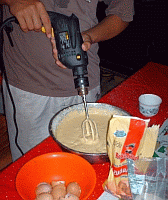 |
| Béchamel Related |

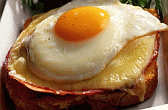


|
| Descriptions |


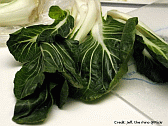
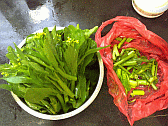
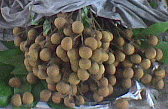
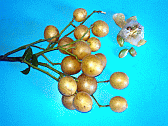
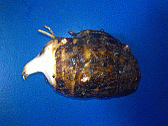
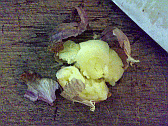
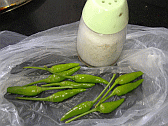

|
| Chinese Recipes |


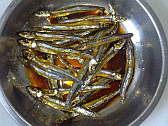


|
|